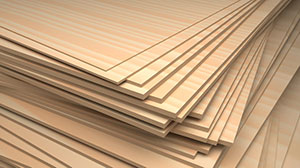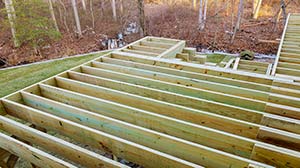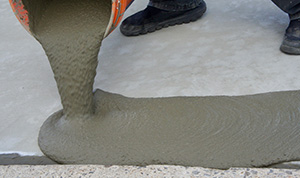
Picture this. You twist the knob of your bathroom handle, and it comes off. It’s a common household problem. However, you have another problem. You have a wooden bathroom door and a metal knob. What’s the quickest way to reattach the two surfaces? Can you trust your tube of liquid nails to do the job?
Liquid Nails can bond wood to metal. You can use some variations of liquid nails in construction projects and home improvement projects to bond wood and metal. They have a potent formula that performs in all weather conditions.
Adhesives are a fast and easy solution to most household and construction projects. Most times, you need to bond similar items such as wood on wood or plastics. In other cases, you are faced with the task of joining different surfaces together.
We look at whether liquid nails, a polyurethane adhesive, sticks to their word in a market awash with adhesives. Let’s find out if liquid nails can bond wood to metal.
When Do You Need Liquid Nails To Bond Wood On Metal?
You need to bond wood on metal when you work on various objects during construction, including metals, concrete, wood, and glass, and Liquid Nails will help ease that process. Suppose you want to join two metals. It’s an easy choice to go for welding. You can always bring out the nail gun if you’re joining wood on wood.
But what happens when you have wood and metal that need to be bonded? You can’t use a nail gun, and you can’t weld wood. It would help if you had a strong adhesive equipped for construction projects and can last long to hold both surfaces in position for a long time.
And that’s why you go for liquid nails.
What Is Liquid Nails?
Liquid Nails are a high-performance construction adhesive that guarantees to work on multiple surfaces. It works on the premise of being a polyurethane adhesive. As a brand, it has various forms.
Liquid Nails Heavy Construction Adhesive and Liquid Nails Interior construction adhesive are listed as suitable for home projects. As much as they offer some adhesive strength, they might not match the power you need for wood-to-metal bonding in a big construction project.
However, new improvements have led to stronger adhesives with the power to join two different surfaces. We’re talking about a liquid nail variant such as the Fuze-It Max. Fuze It Max has been tested in a lineup of other construction adhesives, and it shows superb results in different bonding materials.
Why Liquid Nails Works On Wood-to-Metal Bonds?
As mentioned, there are multiple classes of adhesives. Polyurethane adhesives are popular in the construction industry since they show incredible performance when used for exterior or interior projects. For instance, this video shows how some of the best-rated polyurethane adhesives work on wood and PVC.
Polyurethane Formula
Polyurethanes are closely related to epoxies. Polyurethane-based adhesives typically work well on surfaces through which air can pass. It follows that you need both characters to have similar porosities to get the best result. That is why a polyurethane formula works well for wood-on-wood applications.
Wood and metal have different porosities. Yet, the polyurethane nature of liquid nails will work on both surfaces. Wood allows moisture and air to pass through the fibers. As such, it is already a good candidate for liquid nails. Metal, on the other hand, would require priming to work. Making the metal coarse would improve the likelihood of Liquid Nails adhesive working as a wood-to-metal adhesive.
Multipurpose Application
You can compare liquid nails to another popular polyurethane adhesive, Gorilla Glue. Liquid nails are sold with the promise of joining anything, ranging from wood, glass, metal, and concrete.
Going by different user reviews on e-commerce sites such as Amazon, it appears people who used Liquid Nails for various applications had long-term success with the product.
Liquid Nails Are Weatherproof
One of the best properties that make liquid nails a good metal-to-wood seal is weatherproof. As a construction adhesive, the weatherproof feature comes in handy when you’re handling outdoor projects.
Temperature changes have varied effects on different materials. Heat expands both metal and wood to varying degrees, while cold temperatures shrink both surfaces to varying degrees.
House interiors have regulated temperatures. Liquid nails, if applied well, prevent wood and metal from expanding and shrinking in such a way that it comprises the adhesive bond between the two surfaces.
It makes Liquid nails an excellent fit for home use.
Still, weather changes will affect the two materials more adversely if they are used outside.
According to the official Liquid Nails website, Fuze-It Max bonds nearly everything to everything in any weather condition (-40 to 300 F.). It remains active to be used in temperatures between 0 and 140 F. That puts liquid nails in a comfortable spot as an outdoor and indoor wood-to-metal adhesive.
Liquid Nails Are Water Activated
You must be wondering how moisture plays a role in the bonding power of an adhesive. Polyurethane adhesives work just like cyanoacrylates. They require moisture to work. The moisture allows the polymers in the polyurethane composition of the adhesive to react with each other and will enable the adhesive to bond two different density surfaces.
Being water-activated allows the Liquid Nails adhesive to seep through the wood, forming a thin layer. Most of the top pores, partially sealed, will enable the metal and wood contact to hold for a long time. However, due to the density difference and porosity difference, the bond might take more time to cure.
In this case, you would need a fastener to hold the two surfaces securely.
Liquid Nails Works On Most Home-Use And Constructions Metals
Stainless steel and aluminum are common metals on most construction sites. Iron, copper, and brass are common metals for interior applications. These metals have a rough surface that works well with adhesives such as liquid nails.
However, some metals such as iron must be primed with an anti-rust agent before bonding with wood using the adhesive. Even after applying, you can sand and paint these bonded objects.
It might be safe to keep a light load on some of your wood-metal bonds, especially if you create a wood and metal surface to hang stuff around the house.
You might consider using liquid nails wood-to-metal application in low-interruption places such as vertical walls and floors for construction projects. You can also use them in interior projects where you don’t need too much pressure exertion.
This is because you need it to fully cure for a long time after the initial fast-cure time has elapsed.
How Well Does Liquid Nails Adhesive Perform In Wood-to-metal Applications?
Adhesives are usually put through a stress test to determine how well they do in different scenarios. A piece of wood and stainless steel are bonded and fully cured for two weeks in this test. That is standard time for polyurethane adhesives, although it takes about 30 minutes after the application to bond the two objects.
There’s a slight difference in the test. However, the adhesives belong to the same class as Liquid Nails. The polyurethane adhesives are rated for how much pressure it takes for the wood to detach from the metal plate.
The results range from 411 psi to 3000 psi. The strongest adhesive bonded the two surfaces so well that they didn’t detach even past the 3000 psi mark. The detachment happened when a section of the wood tore off.
How To Bond Metal To Wood Using Liquid Nails?
During construction, your surfaces are likely to gather dust and dirt. The thin layers of dust can interfere with the bonding ability of a liquid nail adhesive. Therefore, you need a quick clean-up to prime your surfaces for bonding.
This simple procedure should get your surfaces primed and cohesively bonded.
- Precautionary Preparation
Some variants of liquid nails might produce fumes that compromise the quality of your surroundings if the ventilation is insufficient. Therefore, ensure your work area is well ventilated before you start working. Always have protective gloves. A face mask is helpful as an added protective measure.
- Wiping With A Dry Cloth
Use a dry cloth to make sure your surfaces are dirt-free. You can use a brush on wood, especially if it’s rough on the surface. Clean the metal too.
- Sanding
Sanding is the first stage of priming your surfaces for bonding. Construction timber is usually smooth. Sanding with fine-grit sandpaper is vital on the metal first as it creates a better surface with less likelihood of the wood slipping once you place it.
- Moisten
Polyurethanes belong to a class of adhesives known as reactive adhesives. Though it’s a one-part adhesive, it still needs some moisture to activate and cure.
Wipe both surfaces with a moist cloth. It should be wet enough to allow the liquid nails to not drip over the edge.
- Application
Liquid nails, like most polyurethane adhesives, increases in volume if you apply pressure. The amount you put on either surface will spread to cover a larger area. Therefore, apply the adhesive following a zigzag pattern along the length of the material.
If you are working with a long wood board and a long stretch of metal, apply a 1/4-inch continuous line of Liquid Nails Fuze-It Max Construction Adhesive every 10 to 12 inches across the metal surface. Keep the adhesive line about one inch from the edges to prevent wastage.
- Bond And Fasten
This is a crucial step since you want the surfaces to stay aligned to your specifications. Depending on the layout of the two objects, you can use construction tape or a vice grip.
If you are in a high humidity area, bond the two objects as soon as possible. Liquid Nails depend on moisture to cure. If you leave the adhesive exposed for too long (about 10 minutes), it will collect moisture and harden. You end up dealing with a weak bond.
Fasten the two surfaces for up to 24 hours. That’s more than enough time to cure temporarily. It could take a week for the adhesive to cure on the wood and metal bond.
- Clean Up
If you put liquid nail adhesive close to the edges and spill over when you bond wood to the metal, you can clean up the excess. The best time to clean it up would be before it dries. Wiping it with a moist cloth should work. However, if it dries up, soften the area with a heat source. A heat gun works best.
Scrape the softened excess off. A sharp putty knife will give you the cleanest result. Sand over the area to smooth it out. If you have any residue left, bring out the mineral spirits.
However, be careful. The metal and wood must be firmly pressed into each other so the heat from the heat source doesn’t seep between the cracks and compromises the bond’s structural integrity.
Frequently Asked Questions
- What Is The Best Liquid Nail Adhesive To Bond Wood To Metal??
Earlier variants of liquid nails showed far less bonding ability than new releases. Liquid Nails Fuze It Max performed better when compared to earlier versions and some other brands of polyurethane adhesives.
- Are Liquid Nails Toxic?
Liquid nails might contain carcinogenic properties. However, it is safe once it is fully cured.
- How Do You Extend The Shelf Life Of Liquid Nails?
Don’t leave Liquid Nails exposed for too long. It cures fast when it is exposed to air and moisture.
- How Do You Remove Liquid Nails From Your Hands?
Wipe liquid nails from your hands as soon as it gets on you. It is not easy to remove once it’s dry. However, petroleum jelly and oil can soften it so you can remove it. You can also use spirits to remove it from your hands.
Conclusion
You can fix your exterior and interior space with a little glue. And now that you know the power you have in your hands when you have Liquid Nails, you should stock some for your next project.
Alternatively, let a professional handle your home improvement project.







